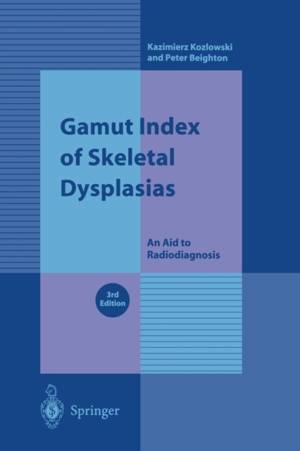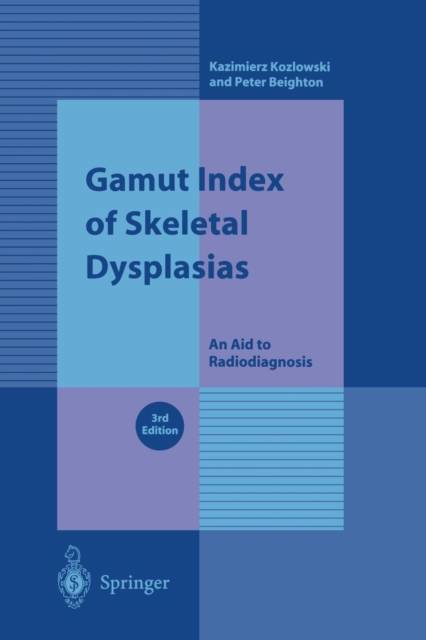
- Afhalen na 1 uur in een winkel met voorraad
- Gratis thuislevering in België vanaf € 30
- Ruim aanbod met 7 miljoen producten
- Afhalen na 1 uur in een winkel met voorraad
- Gratis thuislevering in België vanaf € 30
- Ruim aanbod met 7 miljoen producten
Zoeken
Gamut Index of Skeletal Dysplasias
An Aid to Radiodiagnosis
Kazimierz Kozlowski, Peter Beighton
Paperback | Engels
€ 125,95
+ 251 punten
Omschrijving
The publication of a third edition after only five years confirms the widespread popularity of this book. Apart from the numerous additions and modifications consequent on the substantial expansion of knowledge in this field, the authors have further improved the value of this text with the excellent chapter, as men- tioned in their preface, on general aspects of the problem. The advances referred to in this chapter, particularly molecular genetics and database access, have transformed the diagnosis of skeletal dysplasias. However, this basic text remains an essential starting point for anyone confronted with an unfamiliar condition. Among the references listed on page xix, Dr Kozlowski's paper 'The radiographic clues in the diagnosis of bone dysplasias', Pediatric Radiology 1985; 15: 1-3, is still essential reading. John Masel Preface to the First Edition The skeleton is involved to a significant extent in more than 500 genetic and congenital syndromes and although the majority of these are individually rare, collectively they are not uncommon. Diagnostic precision, which is crucial for accurate prognostication and effective management, is frequently dependent upon recognition of radiological stigmata. For this reason the radiologist plays a key role in the appraisal and investigation of persons with disorders of this type. With these points in mind we have written this handbook for use in the radiographic reporting room. We have endeavored to provide the essential information which will facilitate radiodiagnosis and have striven for clarity and accuracy.
Specificaties
Betrokkenen
- Auteur(s):
- Uitgeverij:
Inhoud
- Aantal bladzijden:
- 256
- Taal:
- Engels
Eigenschappen
- Productcode (EAN):
- 9781852333652
- Verschijningsdatum:
- 19/02/2001
- Uitvoering:
- Paperback
- Formaat:
- Trade paperback (VS)
- Afmetingen:
- 156 mm x 234 mm
- Gewicht:
- 403 g

Alleen bij Standaard Boekhandel
+ 251 punten op je klantenkaart van Standaard Boekhandel
Beoordelingen
We publiceren alleen reviews die voldoen aan de voorwaarden voor reviews. Bekijk onze voorwaarden voor reviews.








